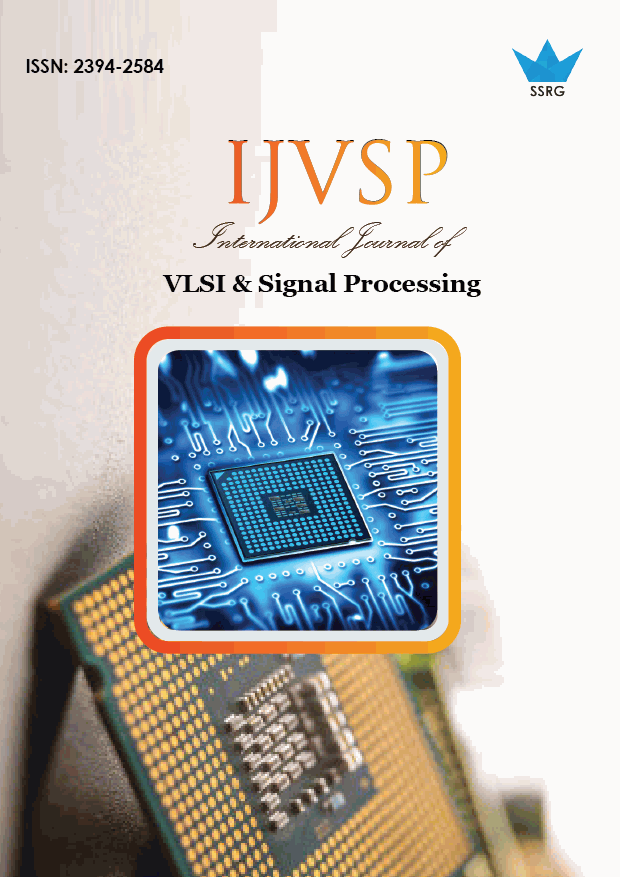Semi-Custom design of functional unit block using data path methodology in data cache unit

| International Journal of VLSI & Signal Processing |
| © 2017 by SSRG - IJVSP Journal |
| Volume 4 Issue 2 |
| Year of Publication : 2017 |
| Authors : Aarti Patel and Prashant K.Shah |
How to Cite?
Aarti Patel and Prashant K.Shah, "Semi-Custom design of functional unit block using data path methodology in data cache unit," SSRG International Journal of VLSI & Signal Processing, vol. 4, no. 2, pp. 34-38, 2017. Crossref, https://doi.org/10.14445/23942584/IJVSP-V4I3P107
Abstract:
Chip design commences with the conception of an idea dictated by the market. These ideas are then translated into architectural and electrical specifications. The architectural specifications define the functionality and partitioning of the chip into several manageable blocks. A Functional Unit Block (FUB) is a small part of the micro-processor that is characterized by an RTL code. This project discusses the design of a structured data path functional unit block of a microprocessor. It explains the total flow of the back end design starting from implementing the schematic circuit from given RTL code using standard library cells to final layout. The design will be fulfilled by all the given constraints like operating frequency, timing violations, area, power, noise, reliability and circuit quality.
Keywords:
RTL , Functional Unit block , Formal Equivalence Verification.
References:
[1] M. law, “Intelprocessors,”http://www.intel.com/museum/ archives/historydocs/ mooreslaw.htm.
[2] J. M. Rabaey, A. P. Chandrakasan, and B. Nikolic, “Digital Integrated circuits. Prentice hall Englewood Cliffs”, vol. 2, 2002.
[3] I. library, “Intel design methodology,” http://www.intelpedia. intel.com.
[4] Kei-yong khoo , “Formal Verifications in modern chip design”, IEEE , 26th February 2007.
[5] Guangqiu Chen, Hidetoshi Onodera , Keikichi Tamaru “Timing and Power Optimization by Gate Sizing Considering False Path” , IEEE 6th August 2002.
[6] R. W. Keyes,”The impact of moore’s law”,IEEE solid – state circuits society Newsletter,vol. 11,no. 5,pp,25-27,Sept 2006
[7] H. Bhatnagar, Advanced ASIC chip synthesis:Using S ynopsys Design Complier Physical Complier and Prime Time 2nd .[Online]Available :htttp://ebooks.kluweronline.com
[8] S. Pullela, N. Menezes, and L.T. Pillage,”Low Power IC Clock tree design”,in Proceedings of the IEEE 1995 Custom Integrated Circuits Conference, May 1995,pp.263- 266.
[9] W.M.D.J.G.Xi,”Buffer Insertion and sizing under process variations for low power clock distribution”,in 32nd Design Automation Conference,June 1995,pp.491-496.
[10] V.Tirumalashetty and H. Mahmoodi, “Clock gating and negative edge triggering for energy recovery clock”, in 2007 IEEE International Symposium on Circuits and Systems,May 2007,pp. 1141-1144.

 10.14445/23942584/IJVSP-V4I3P107
10.14445/23942584/IJVSP-V4I3P107